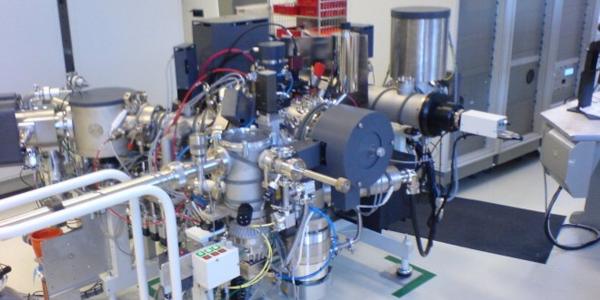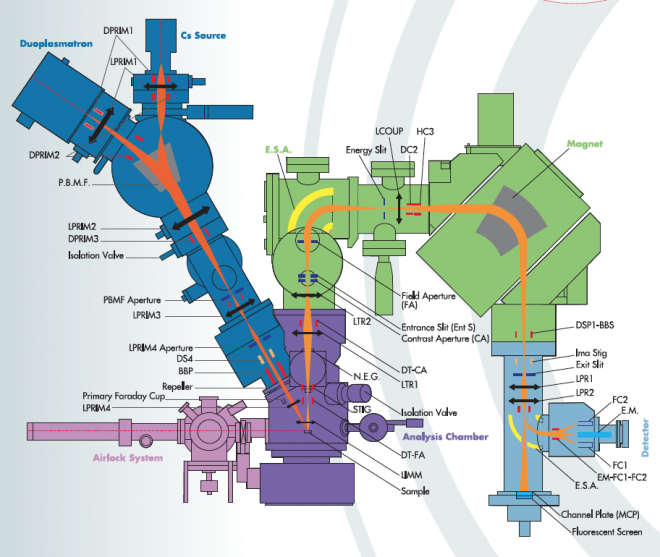Secondary ion mass spectrometry (SIMS) is one of the most sensitive techniques for studying surfaces of materials. It can determine the surface chemical composition, very precisely, detecting elements at down to parts-per-billion levels. By focusing a beam of charged atoms (ions) onto the surface of the sample, atoms are ejected (a process called sputtering). Using lenses and a mass spectrometer, the initial location and type of atom (chemistry and isotope) can be identified to a very high precision. Sputtering can also be used to erode the sample, allowing three-dimensional chemical/isotope profiles to be obtained. A significant advantage of SIMS is that it is sensitive to all elements in the periodic table.
The new Cameca IMS 7f-Geo SIMS acquired recently by David Fike and colleagues is especially configured to measure stable isotope ratios with very high precision from sputtered areas that are a few micrometers in diameter. (For perspective, the average diameter of the human hair is 100 micrometers.) The instrument has a can acquire data quickly thanks to a 3-collector detection system that is optimized for fast peak switching. It is highly automated and will have custom software that is adapted for rare earth trace element measurements. This will be only the third 7f-Geo in the world, the other two residing at Caltech and Virgina Tech. Because of the capabilities for high sensitivity, depth profiling, and imaging, the IMS 7f instrument series is widely used by scientists across many disciplines. At Washington University, SIMS will be used to investigate geological and biological samples, together helping to understanding the long-term evolution of Earth’s surface environment as well as that of other bodies throughout the solar system.
SIMS instruments are also widely used by materials scientists, where SIMS techniques have a long history in deciphering the 3D structure of natural and synthetic materials (e.g., semiconductors, photovoltaics, ceramics, and assorted metallic alloys). WashU's SIMS facility resides in the basement of Rudolph Hall where it is shared with the Institute of Materials Science and Engineering (IMSE).


